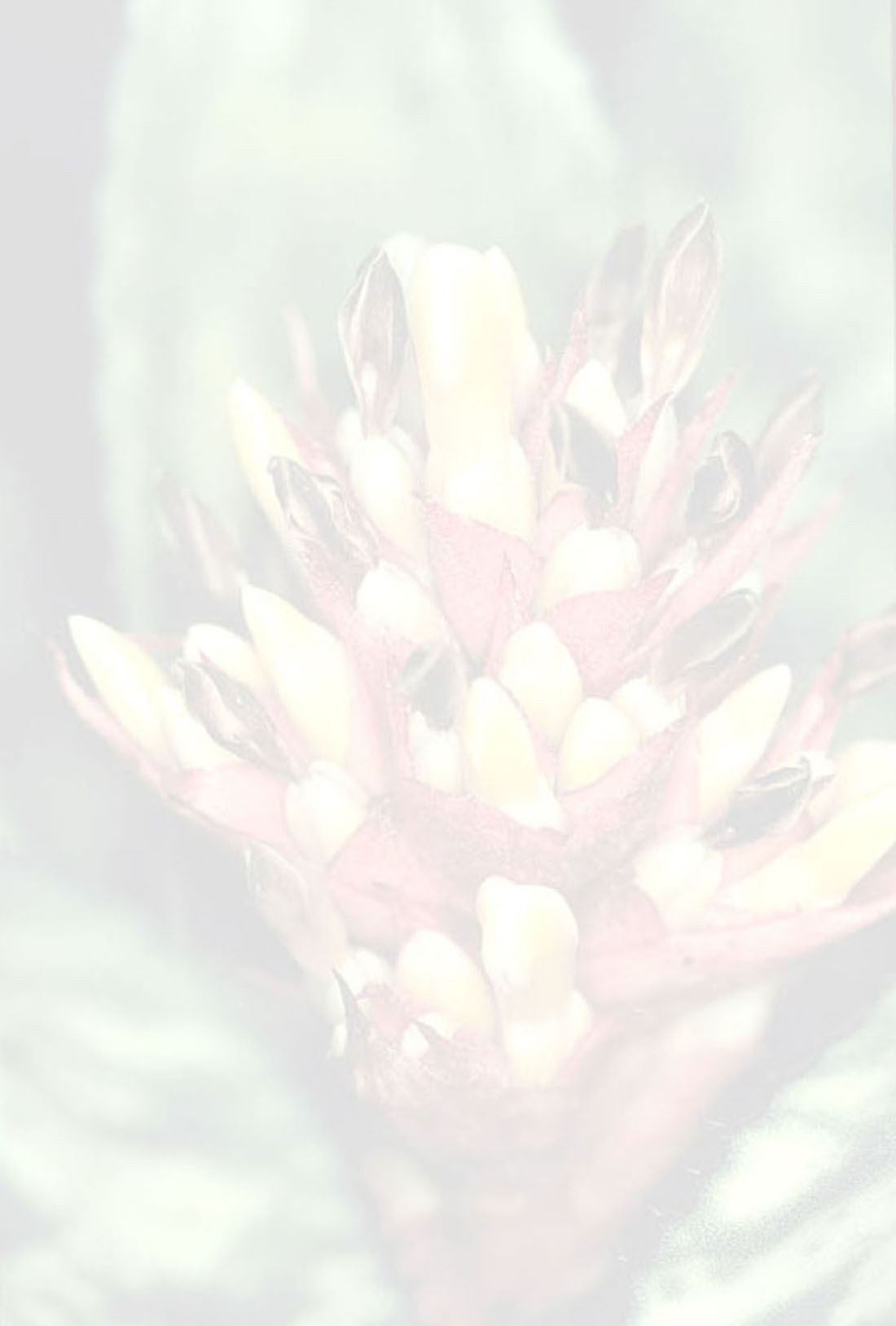


plant epiphytic or saxicolous, propagating by basal, axillary shoots. leaves strongly coriaceous, rosulate, subspreading-arcuate at anthesis, forming a broad crateriform rosette; sheath elliptic, 24–30 x 9–10 cm, dark castaneous and densely brown-lepidote on both sides; blade narrowly sublinear-attenuate, acuminate and ending in a dark castaneous, stout, rigid spine ca 1 cm long, not narrowed toward base, 65–195 cm long, 4–5 cm wide at base, glabrescent adaxially, subdensely pale-lepidote abaxially with trichomes along mid-nerves, green, the central ones becoming reddish-rose at anthesis only, margins laxly spinose, spines subtriangular-uncinate, nearly black, the basal spines strongly retrorse, 3–5 mm long, ca 4 mm wide at base, the upper spines strongly antrorse, 1–1.5 mm long, 7.5–8 cm apart. inflorescence: peduncle inconspicuous, 4–5 cm long, 4–6 cm in diameter; peduncle bracts the basal ones subfoliaceous, densely and coarsely brown lepidote and dark castaneous toward base, inconspicuously pale-lepidote and green toward apex, suberect, distinctly exceeding the inflorescence, completely concealing the peduncle, densely spinose near the base, spines 3–5 mm long, dark brown, laxly spinose toward apex, spines 1–1.5 mm long, the upper peduncle bracts much reduced and resembling the outer floral bracts; fertile part simple, subumbellate, capitate, ca 7.5 cm long, 8–13 cm in diameter, apex neatly flat, centrally bearing an inconspicuous coma of narrow sterile bracts; floral bracts erect or nearly so, strongly coriaceous, acuminate and ending in a rigid spine, dark castaneous toward base, paler at apex, densely and coarsely lepidote with brown-centered trichomes, adaxially strongly canaliculate and abaxially obtusely carinate toward apex, slightly exceeding the flowers, irregularly spinose at middle, spines dark-brown, antrorse or retrorse, 2–3 mm long, entire toward base and apex, the outer bracts triangular, ca 8 x 4.5 cm, the inner ones narrowly triangular 7 x 2–2.5 cm. flowers numerous, 65–67 mm long, sessile, erect, densely arranged, odorless; sepals narrowly elliptic-ovate, long acuminate caudate, asymmetrical, 45–47 x 12–14 mm, free, densely and coarsely lepidote with brown centered trichomes, strongly coriaceous at base, membranaceous near the apex, the adaxial ones alate-carinate with keels decurrent on the ovary, the abaxial one ecarinate; petals lanceolate, acuminate, erect at anthesis except for the strongly recurved apex, about equaling the sepals, 47 x 7–7.5 mm, weakly connate at base for 17–18 mm, white, without appendages but bearing at the base 2 conspicuous, thick, lateral callosities 25–26 mm long. stamens included; filament equally adnate to petals tube and free above it; anther linear, base sagittate, apex acuminate, ca 11 mm long, fixed near the base; pollen sulcate, 26–30 Ám long. pistil: stigma conduplicate-spiral, cylindrical, ca 4 mm long, white, blades densely long-lacerate; ovary subclavate, 1&–20 mm long, 7–12 mm wide at base, 14–22 mm wide at apex, slightly to distinctly complanate, alate-carinate mainly near the apex, white, glabrous toward base; ovules cylindraceous, obtuse; epigynous tube inconspicuous. fruits castaneous.Edited from (16-02-2023): Leme & Siqueira 2001. (protologue) Studies in Bromeliaceae of Northeastern Brazil. I .